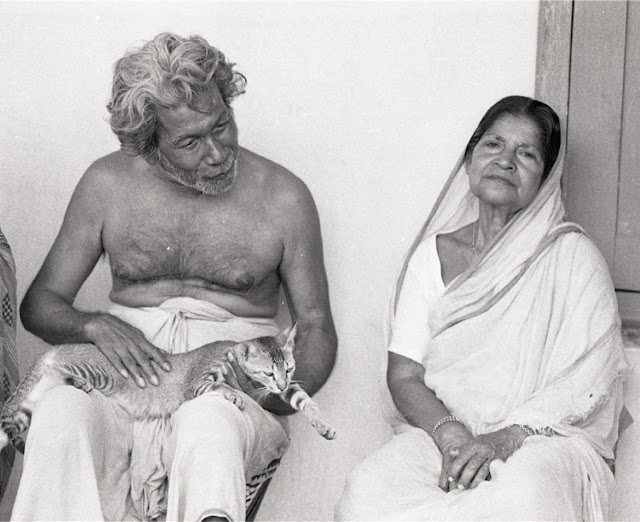Ramkinkar Baij lived art. From muddy village roots to iconic sculptures, his journey is raw, real, and deeply inspiring. Read the full story on Veritas Times.
Ramkinkar Baij: The Artist Who Hung His Canvas to Stop the Rain
He didn’t have money to buy straw to fix the roof. So, Ramkinkar Baij hung his own paintings upside down to stop the rain from leaking in. Yes, that’s the same Ramkinkar—one of India’s greatest sculptors and painters. People often remembered him for his drinking and his closeness with women. But very few remembered his art, his music, and his inner truth.
One day in Santiniketan, Rabindranath Tagore called him and asked,
“Whose sculpture have you made?”
Ramkinkar replied, “I don’t know. It came to me like a dream.”
Tagore asked again, “Is there any living being in it?”
He said, “Yes... and also no.”
Then Tagore softly said, “I saw a girl’s face, her head bent.”
Ramkinkar, shyly: “Maybe... maybe she was bending to kiss someone.”
The silence between the poet and the sculptor said more than words. In Santiniketan, people gossiped more about Ramkinkar’s private life than his work. But he never stopped creating—in the forest paths, in poor localities, among tribal communities. With his canvas, colours, and dreams.
He had many muses: women who became models, friends, and sometimes more. But Ramkinkar never denied it. He said, “All of them are still alive in my sketches, paintings, and sculptures.” For him, the human body was not sin—it was beauty, inspiration, and life.
He came to Santiniketan in 1925 from a poor potter’s village in Bankura. At first, even famous painter Nandalal Bose was surprised by his talent and said, “You know so much—why are you here?” But he stayed on. For the next 55 years, he lived, painted, and sculpted in Santiniketan.
Famous filmmaker Ritwik Ghatak made a documentary on him. In it, Ramkinkar laughed and said, “I use my canvas to cover the roof when it rains. No money to buy straw!”
He saw death as a small thing compared to art. Even in his last days, he told Satyajit Ray, “Manik, call a rickshaw and take me home.” But he never returned to Santiniketan. He died in Kolkata.
On his memorial day, Kanika Bandyopadhyay sang his favorite Rabindra Sangeet—
"O chand chokher joler laglo jowar…"
And the sky cried quietly for the mad artist who loved colour, life, and dreams more than comfort, fame, or money.


